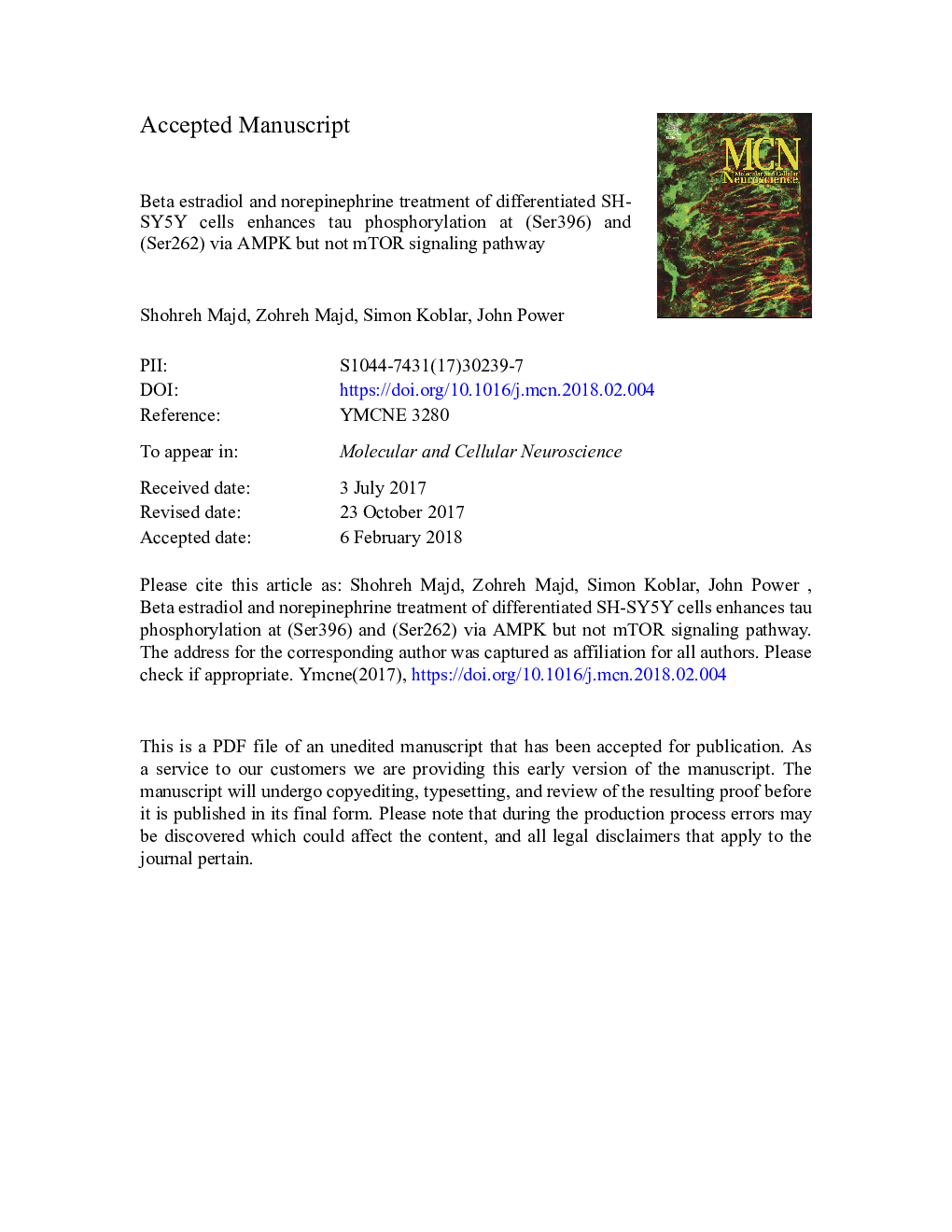| Article ID | Journal | Published Year | Pages | File Type |
|---|---|---|---|---|
| 8478382 | Molecular and Cellular Neuroscience | 2018 | 32 Pages |
Abstract
Hyperphosphorylation of tau is one of the main hallmarks for Alzheimer's disease (AD) and many other tauopathies. Norepinephrine (NE), a stress-related hormone and 17-β-estradiol (E2) thought to influence tau phosphorylation (p-tau) and AD pathology. The controversy around the impact of NE and E2 requires further clarification. Moreover, the combination effect of physiological and psychological stress and estrogen alteration during menopause, which affect p-tau, has not been addressed. Exposure to E2 is believed to reduce NE release, however, the link between these two hormones and AD at cellular level was also remained unknown. Here, we examined whether NE and E2 treatment of differentiated SH-SY5Y cells affected tau phosphorylation. The involvement of adenosine monophosphate kinase protein kinase (AMPK) and target of Rapamycin (mTOR) as the possible mechanisms, underlying this effect was also investigated. Subsequent to SH-SY5Y differentiation to mature neurons, we treated the cells with NE, E2 and NE plus E2 in presence and absence of Compound C and Rapamycin. Cell viability was not affected by our treatment while our Western blot and immunofluorescent findings showed that exposure to NE and E2 separately, and in combination enhanced p-tau (Ser396) and (Ser262)/tau but not (Ser202/Thr205)/tau. Blocking AMPK by Compound C reduced p-tau (Ser396) and (Ser262), while GSK-3β and PP2A activities were remained unchanged. We also found that blocking mTOR by Rapamycin did not change increased p-tau (Ser396) and (Ser262) due to NEâ¯+â¯E2 treatment. Collectively, our results suggested that tau hyperphosphorylation due to exposure to NE/E2 was mediated by AMPK, the main energy regulator of cells during stress with no significant involvement of mTOR, GSK-3β and PP2A.
Related Topics
Life Sciences
Biochemistry, Genetics and Molecular Biology
Cell Biology
Authors
Shohreh Majd, Zohreh Majd, Simon Koblar, John Power,
